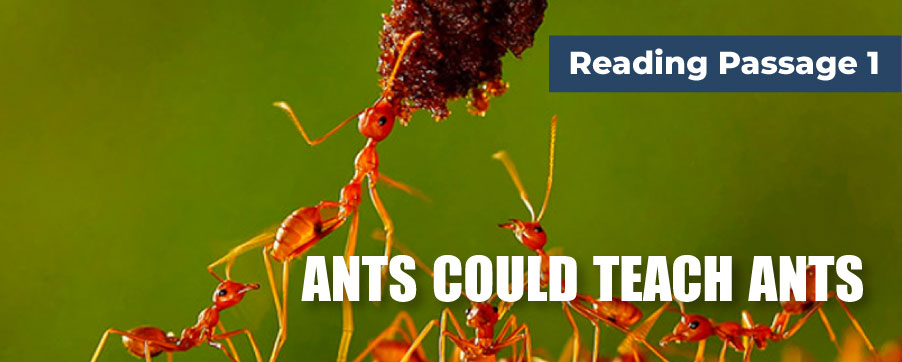
IELTS Recent Mock Tests Volume 4
- 发布时间: 29 Nov 2017
- 模考人次: 1,174,627
正确答案:
Part 1: Question 1 - 13
- 1 C
- 2 A
- 3 D
- 4 A
- 5 B
- 6-9 A,B,E,G
- 10 NO
- 11 NOT GIVEN
- 12 NOT GIVEN
- 13 YES
- 1 C
- 2 A
- 3 D
- 4 A
- 5 B
- 6-9 A,B,E,G
- 10 NO
- 11 NOT GIVEN
- 12 NOT GIVEN
- 13 YES
Part 2: Question 14 - 26
- 14 photographic film
- 15 Bakelite
- 16 switches
- 17 Britain/UK
- 18 fireproof
- 19 clear and glass-like
- 20 rigid
- 21 FALSE
- 22 NOT GIVEN
- 23 FALSE
- 24 NOT GIVEN
- 25 FALSE
- 26 TRUE
- 14 photographic film
- 15 Bakelite
- 16 switches
- 17 Britain/UK
- 18 fireproof
- 19 clear and glass-like
- 20 rigid
- 21 FALSE
- 22 NOT GIVEN
- 23 FALSE
- 24 NOT GIVEN
- 25 FALSE
- 26 TRUE
Part 3: Question 27 - 40
- 27 D
- 28 B
- 29 A
- 30 C
- 31 A
- 32 A
- 33 high tides
- 34 agricultural production
- 35 coastal boundaries
- 36 NOT GIVEN
- 37 NOT GIVEN
- 38 NO
- 39 YES
- 40 NO
- 27 D
- 28 B
- 29 A
- 30 C
- 31 A
- 32 A
- 33 high tides
- 34 agricultural production
- 35 coastal boundaries
- 36 NOT GIVEN
- 37 NOT GIVEN
- 38 NO
- 39 YES
- 40 NO
详细试卷答案解析:
Questions 1-5
Look at the following statements (Questions 1-5) and the list of people in the box below.
Match each statement with the correct person, A, B, C or D.
Write the correct letter, A, B, C or D, in boxes 1-5 on your answer sheet.
NB You may use any letter more than once.
1 Animals could use objects to locate food.
2 Ants show two-way, interactive teaching behaviors.
3 It is risky to say ants can teach other ants like human beings do.
4 Ant leadership makes finding food faster.
5 Communication between ants is not entirely teaching.
| A | Nigel Franks |
| B | Marc Hauser |
| C | Tim Caro |
| D | Bennett Galef Jr. |
- 1 Answer: C
Keywords in Questions
Similar words in Passage
Q1. Animals could use objects to locate food.
In another instance, birds watching other birds using a stick to locate food such as insects and so on.
+ Take a look at the sentence in the 6th paragraph: “… birds watching other birds using a stick to locate food such as insects….”, this sentence contains the keywords in the question => The answer must be somewhere in this sentence.
+ Understanding the idea in the question, the answer is the name that was mentioned in the beginning of the paragraph: Tim Caro
- 2 Answer: A
Keywords in Questions
Similar words in Passage
Q2. Ants show two-way, interactive teaching behaviors
… the first in a non-human animal, that involves bidirectional feedback between teacher and pupil.
+ Take a look at the sentence:” … the first in a non-human animal, that involves bidirectional feedback between teacher and pupil”. “Two-way” and “bidirectional” has similar meaning, the same with “interactive” and “feedback”, which mean the answer should be the person that was mentioned in this paragraph
+ Understanding the idea in the question, the answer should be Nigel Franks
- 3 Answer: D
Keywords in Questions
Similar words in Passage
Q3. It is risky to say ants can teach other ants like human beings do.
He warned that scientists may be barking up the wrong tree […] humanlike behavior among other animals but humanlike thinking that underlies such behavior
+ Take a look at the sentence: “barking up the wrong tree” mean getting the wrong idea, which is similar to “risky to say”, plus, we have the word “warned” that is also related to “risky”. “Humanlike” mean “like human beings do”
+ Understanding the idea in the question, the answer should be the one who was referred as “He” - Bennett Galef Jr
- 4 Answer: A
Keywords in Questions
Similar words in Passage
Q4. Ant leadership makes finding food faster.
With the guidance of leaders, ants could find food faster
+ Take a look at the sentence: ”With the guidance of leaders, ants could find food faster“ this sentence contains the both keywords in the question, making it an obviously answer
+ Understanding the idea in the question, the answer should be Franks - Nigel Franks
- 5 Answer: B
Keywords in Questions
Similar words in Passage
Q5. Communication between ants is not entirely teaching.
but we don’t call it teaching, even though it is clearly transfer of information
+ Take a look at the sentence: “transfer of information” refers to “communication”, and Hauser refuse calling it teaching, which also mean it’s “not entirely teaching”
+ Understanding the idea in the question, the answer should be Marc Hauser
Questions 6-9
Choose FOUR letters, A-H
Write your answers in boxes 6-9 on your answer sheet.
Which FOUR of the following behaviors of animals are mentioned in the passage?
- A
- B
- C
- D
- E
- F
- G
- H
- 6-9 Answer: A,B,E,G
Keywords in Questions
Similar words in Passage
Q6 - Q9.
A. touch each other with antenna
B. alert others when there is danger
C. escape from predatorsD. protect the young
E. hunt food for the young
F. fight with each other
G. use tools like twigs
H. feed on a variety of foods
A. Once a follower got its bearings, it tapped the leader with its antenna, prompting the lesson to literally proceed to the next step
B. that uses alarm calls to warn fellow members about the presence of a predator
C. Not given
D. Not given
E. from killing a gazelle and allowing young cubs to eat
F. Not given
G. birds watching other birds using a stick to locate food such as insects and so on
H. Not given
A. In the 1st paragraph, the ants were described to tap/touch the leader with its antenna. The keywords are matched, so A is correct
B&C. In the 5th paragraph, the animals were described to warn – alert others when there is a predator – which is danger, but didn’t mention the way they escape. The keywords of B are matched, but C aren’t, thus, B is correct
D&E. In the 6th paragraph, the cheetah was described to kill – hunt a prey and allow the young to eat, plus teaching them how to hunt, not protecting them. The keywords of E are matched, but D aren’t , thus, E is correct
F. The article didn’t mention anything about fighting, thus, F is not correct
G. using a stick – a tool to locate food. The keywords are matched, so G is correct
H. The article didn’t mention anything about variety of foods, thus, H is incorrect
Questions 10-13
Do the following statements agree with the claims of the writer in Reading Passage 1?
In boxes 10-13 on your answer sheet, write
| YES | if the statement agrees with the views of the writer |
| NO | if the statement contradicts the views of the writer |
| NOT GIVEN | if it is impossible to say what the writer thinks about this |
10 Ants' tandem running involves only one-way communication.
11 Franks's theory got many supporters immediately after publicity.
12 Ants' teaching behavior is the same as that of human.
13 Cheetah share hunting gains to younger ones
- 10 Answer: NO
Keywords in Questions
Similar words in Passage
Q10. Ants' tandem running involves only one-way communication.
“Tandem running is an example of teaching, to our knowledge the first in a non-human animal, that involves bidirectional feedback between teacher and pupil"
+ Take a look at the sentence: the keyword “Tandem running is match between the question and the sentence, which mean the answer is in this sentence
+ The phrase “one-way communication” is contradict with the phrase “bidirectional
Feedback”, which mean it’s a two way communication
+ Understanding the question, the answer should be NO
- 11 Answer: NOT GIVEN
Keywords in Questions
Similar words in Passage
Q11. Franks's theory got many supporters immediately after publicity.
No sooner was the paper published, of course, than another educator questioned it.
[…]Later, Franks took a further study […] His ideas were advocated by the students who carried out the video project
+ Take a look at the sentence: the keyword “published” and “no sooner” is matched with “publicity” and “immediately”, which mean the answer is in this sentence
+ There was an educator questioned about it, yet the paragraph didn’t say whether the theory had many supporters or not, thus remain unclear
+ The second sentence could be mistaken as an answer but it was in further study later on
+ Understanding the question, the answer should be NOT GIVEN
- 12 Answer: NOT GIVEN
Keywords in Questions
Similar words in Passage
Q12. Ants' teaching behavior is the same as that of human.
Animals may behave in ways similar to humans without a similar cognitive system, he said, so the behavior is not necessarily a good guide into how humans came to think the way they do.
+ Take a look at the last sentence of the article, it says that the animals – ants, may behave (in general) similar to humans, but doesn’t mention their teaching behavior. Understand the question, the answer here should be NOT GIVEN
- 13 Answer: YES
Keywords in Questions
Similar words in Passage
Q13. Cheetah share hunting gains to younger ones
[…] cheetah mothers that take their cubs along on hunts […] from allowing young cubs to eat to merely tripping the gazelle and letting the cubs finish it off
+ Take a look at the sentence in the 6th paragraph, “Cheetah” is the main key word, the other is “share” which mean “allow the young cubs to eat”
+ Understand the question, the answer here should be YES
READING PASSAGE 1
You should spend about 20 minutes on Questions 1-13 which are based on Reading Passage 1 below

Ants Could Teach Ants
The ants are tiny and usually nest between rocks in the south coast of England. Transformed into research subjects at the University of Bristol, they raced along a tabletop foraging for food -and then, remarkably, returned to guide others. Time and again, followers trailed behind leaders, darting this way and that along the route, presumably to memorize land- marks. Once a follower got its bearings, it tapped the leader with its antennae, prompting the lesson to literally proceed to the next step. The ants were only looking for food but the researchers said the careful way the leaders led followers -thereby turning them into leaders in their own right -marked the Temnothorax albipennis ant as the very first example of a non-human animal exhibiting teaching behavior.
"Tandem running is an example of teaching, to our knowledge the first in a non-human animal, that involves bidirectional feedback between teacher and pupil," remarks Nigel Franks, professor of animal behavior and ecology, whose paper on the ant educators was published last week in the journal Nature.
No sooner was the paper published, of course, than another educator questioned it. Marc Hauser, a psychologist and biologist and one of the scientists who came up with the definition of teaching, said it was unclear whether the ants had learned a new skill or merely acquired new information.
Later, Franks took a further study and found that there were even races between leaders. With the guidance of leaders, ants could find food faster. But the help comes at a cost for the leader, who normally would have reached the food about four times faster if not hampered by a follower. This means the hypothesis that the leaders deliberately slowed down in order to pass the skills on to the followers seems potentially valid. His ideas were advocated by the students who carried out the video project with him.
Opposing views still arose, however. Hauser noted that mere communication of information is commonplace in the animal world. Consider a species, for example, that uses alarm calls to warn fellow members about the presence of a predator. Sounding the alarm can be costly, because the animal may draw the attention of the predator to itself. But it allows others to flee to safety. “Would you call this teaching?” wrote Hauser. “The caller incurs a cost. The naive animals gain a benefit and new knowledge that better enables them to learn about the predator’s location than if the caller had not called. This happens throughout the animal kingdom, but we don’t call it teaching, even though it is clearly transfer of information.”
Tim Caro, a zoologist, presented two cases of animal communication. He found that cheetah mothers that take their cubs along on hunts gradually allow their cubs to do more of the hunting -going, for example, from killing a gazelle and allowing young cubs to eat to merely tripping the gazelle and letting the cubs finish it off. At one level, such behavior might be called teaching -except the mother was not really teaching the cubs to hunt but merely facilitating various stages of learning. In another instance, birds watching other birds using a stick to locate food such as insects and so on, are observed to do the same thing themselves while finding food later.
Psychologists study animal behavior in part to understand the evolutionary roots of human behavior, Hauser said. The challenge in understanding whether other animals truly teach one another, he added, is that human teaching involves a “theory of mind” -teachers are aware that students don’t know something. He questioned whether Franks’s leader ants really knew that the follower ants were ignorant. Could they simply have been following an instinctive rule to proceed when the followers tapped them on the legs or abdomen? And did leaders that led the way to food -only to find that it had been removed by the experimenter -incur the wrath of followers? That, Hauser said, would suggest that the follower ant actually knew the leader was more knowledgeable and not merely following an instinctive routine itself.
The controversy went on, and for a good reason. The occurrence of teaching in ants, if proven to be true, indicates that teaching can evolve in animals with tiny brains. It is probably the value of information in social animals that determines when teaching will evolve rather than the constraints of brain size.
Bennett Galef Jr., a psychologist who studies animal behavior and social learning at McMaster University in Canada, maintained that ants were unlikely to have a “theory of mind” -meaning that leader and followers may well have been following instinctive routines that were not based on an understanding of what was happening in another ant’s brain. He warned that scientists may be barking up the wrong tree when they look not only for examples of human like behavior among other animals but human like thinking that underlies such behavior. Animals may behave in ways similar to humans without a similar cognitive system, he said, so the behavior is not necessarily a good guide into how humans came to think the way they do.














